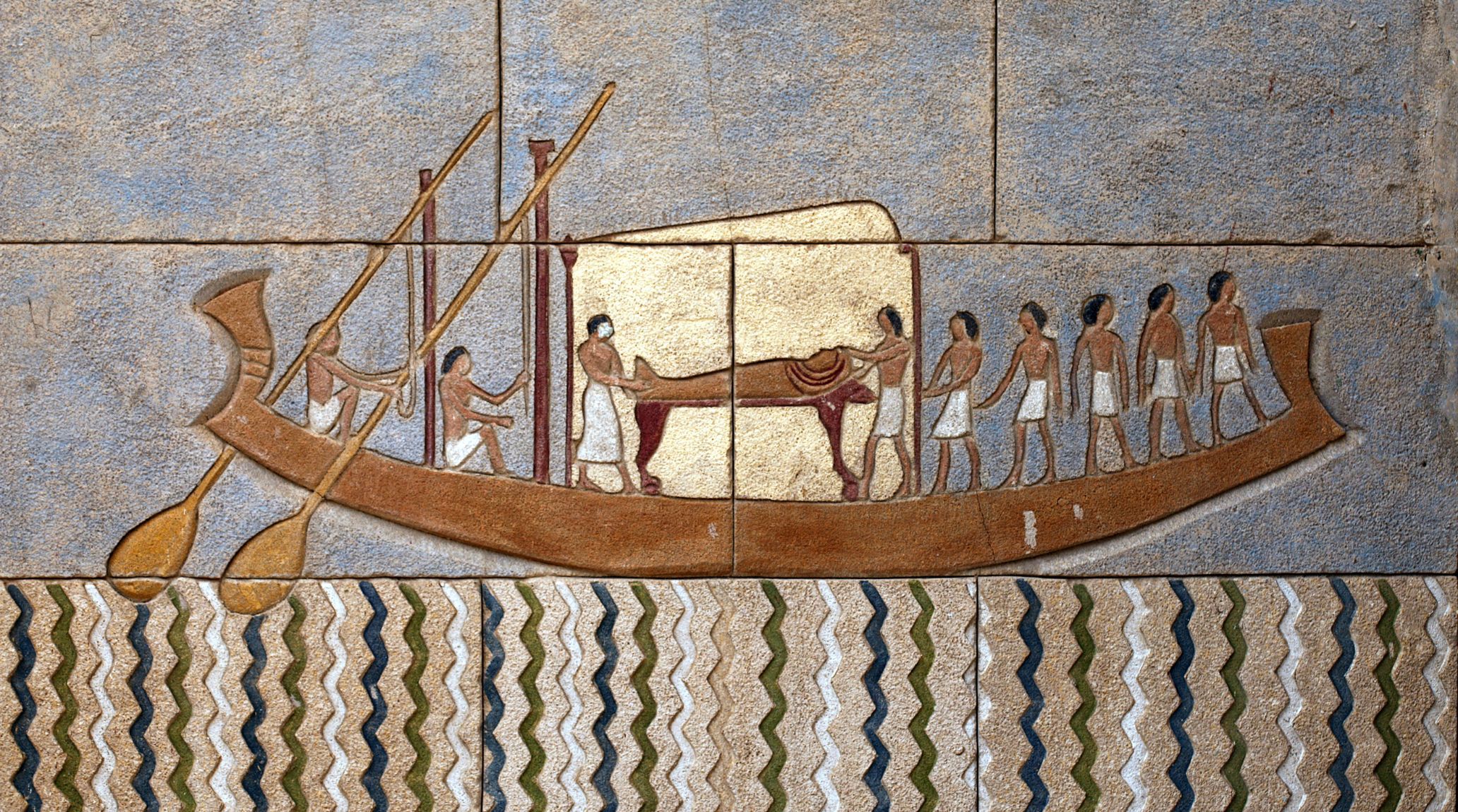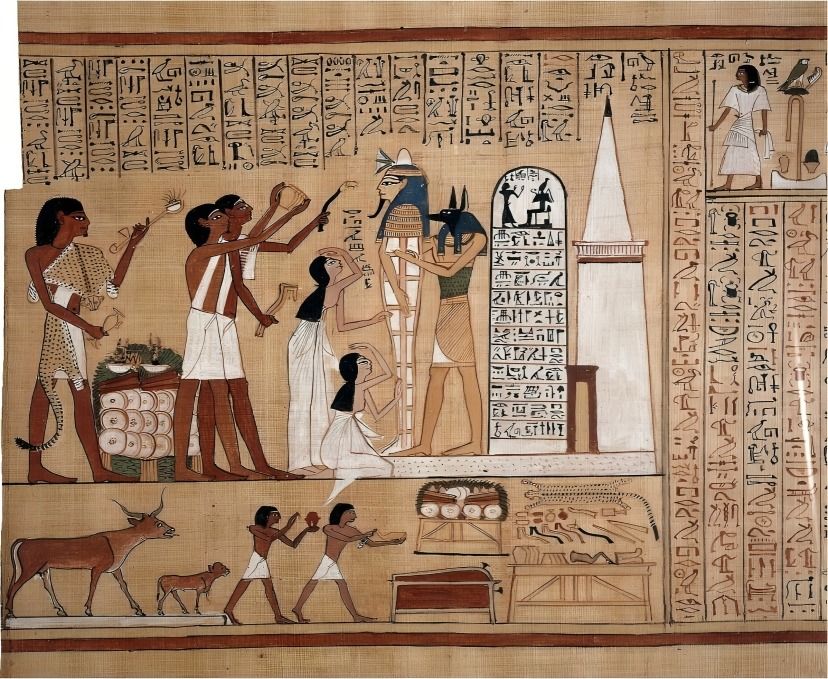
“
Ancient Egyptian funerary practices were a profound aspect of their culture, reflecting a deep-seated belief in the afterlife. This article delves into 20 fascinating facts about these ancient practices, offering insight into their complex rituals and the cultural significance behind them.1
1
”
The mummification process, aimed at preserving the body for the afterlife, took up to 70 days. It involved removing internal organs, treating the body with natron, and wrapping it in linen bandages. 1
During mummification, the deceased’s internal organs were removed and placed in canopic jars. Each jar was guarded by one of the Four Sons of Horus, each responsible for protecting a specific organ. 2

The Opening of the Mouth ceremony, performed by priests, symbolically restored the deceased's senses and abilities in the afterlife. It was believed to allow the deceased to eat, speak, and breathe in the next world.
The Book of the Dead was often included in tombs to guide the deceased through the afterlife. It featured spells, prayers, and illustrations to help navigate the challenges and judgment of the afterlife. 3
Elaborate masks, like the famous gold mask of Tutankhamun, were placed over the mummified body. These masks helped to identify and protect the deceased, ensuring their safe passage to the afterlife. 4
Tombs were stocked with a variety of goods, including everyday items, jewelry, and food offerings. These provisions were meant to support and sustain the deceased in the afterlife, reflecting the belief in a continued existence. 5
Shabtis, small figurines placed in tombs, were intended to serve the deceased in the afterlife. They were modeled to perform labor on behalf of the deceased, such as farming or other tasks required in the fields of paradise. 6
Pharaohs and high-ranking officials were buried in complex tombs with multiple chambers and detailed internal layouts. These tombs could include storerooms, burial pits, and even replicas of the deceased’s earthly homes. 7
The Pyramid Texts, found inscribed on the walls of pyramids, are the oldest known religious texts. These texts include a collection of spells and rituals designed to ensure the deceased’s safe passage and favor in the afterlife. 8
The Valley of the Kings, located on the west bank of the Nile, was a major burial site for Pharaohs and nobles during the New Kingdom. This area is famous for its richly decorated tombs, which include elaborate wall paintings and inscriptions. 9

Sarcophagi, often made of stone or wood, were coffins that housed the mummified bodies. They were intricately decorated with inscriptions, images, and protective spells to ensure the deceased’s protection and identification.
A heart scarab was placed on or near the deceased’s heart to ensure it did not testify against them during the judgment in the afterlife. This practice was part of the "Weighing of the Heart" ceremony, where the heart was weighed against the feather of Ma'at. 10
Funerary boats, either actual boats or models, were included in tombs to transport the deceased across the Nile in the afterlife. These boats symbolized safe passage and were believed to help the deceased navigate the waters of the afterlife. 11
Offering tables were set up in tombs to present food and goods to the deceased. These tables were intended to provide nourishment and sustenance for the deceased in the afterlife, reflecting the belief in ongoing needs. 12
The concepts of Ba and Ka were integral to Egyptian beliefs about the soul. Ba represented the spirit that could travel and interact with the living, while Ka was the vital essence requiring sustenance and protection. 13
Mortuary temples were constructed near the tombs of Pharaohs and important figures. These temples were used for performing rituals and making offerings to honor the deceased. They served as centers for continuing the deceased’s legacy. 14
In earlier periods, animal sacrifices were performed as part of the funerary rites. These sacrifices were meant to accompany the deceased and provide for them in the afterlife. Over time, this practice evolved, reflecting changing beliefs and customs. 15
Linen was a key material used in both mummification and burial garments. High-quality textiles and elaborate patterns in shrouds indicated the deceased’s social status and wealth. Linen’s use demonstrated the value placed on both the preservation of the body. 16
Funerals often included elaborate processions with music, chanting, and ceremonial actions. These processions were designed to honor the deceased and ensure their successful transition to the afterlife. 17
Stelae, carved stone slabs with inscriptions, were placed in tombs and cemeteries to commemorate the deceased. These stelae detailed the life, achievements, and status of the deceased, helping to preserve their memory and ensure their continued recognition. 18


